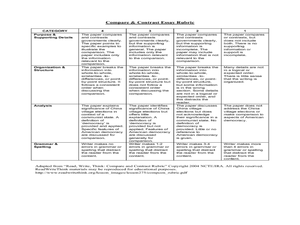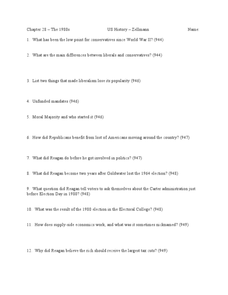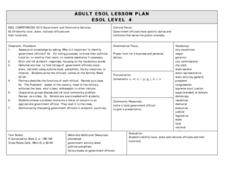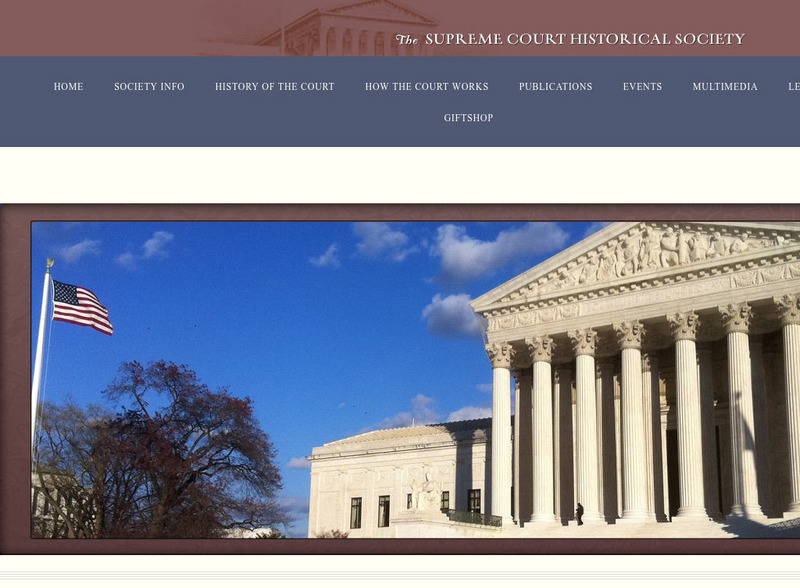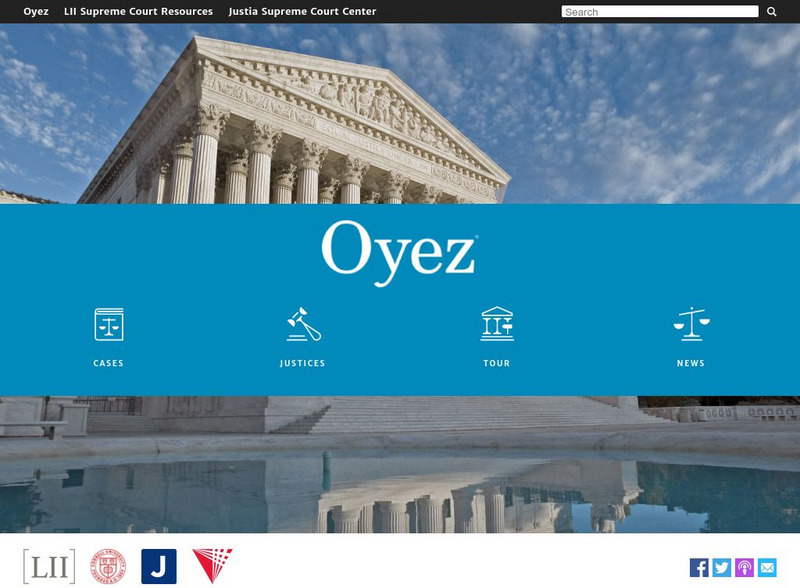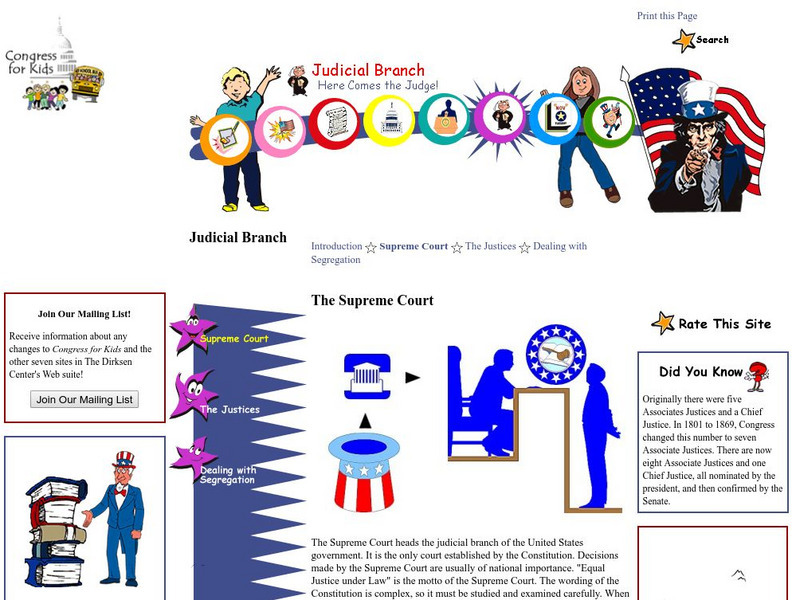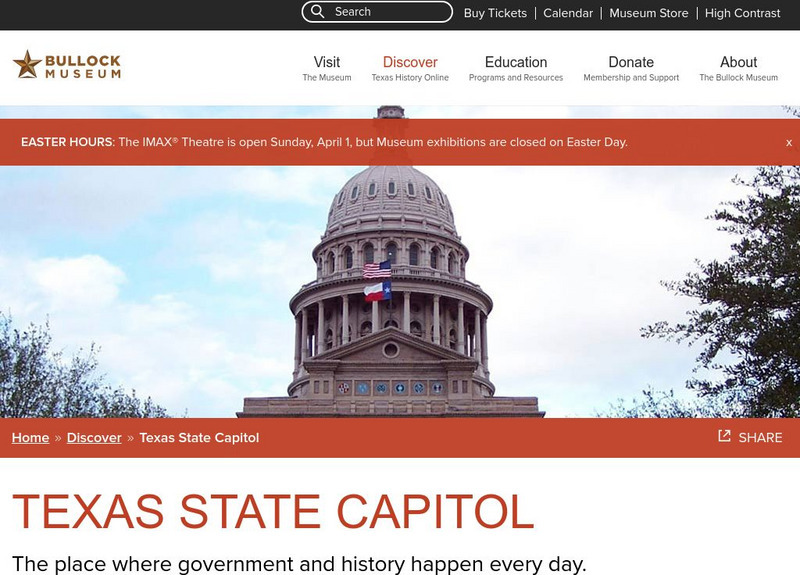Curated OER
Separate is Not Equal
Middle schoolers use political cartoons and editorials to study Brown v. Board of Education. In this Brown v. Board of Education lesson, students read the background information on eight cartoons and editorials for a study...
Curated OER
Democratic Village Elections in China: Comparing Governments of China and the United States
High schoolers explore democratic practices in China. In this global studies lesson, students compare and contrast democratic values of the Chinese government with the American government. High schoolers read provided articles and...
Curated OER
Limits of Power
Middle schoolers examine the importance of limiting power in governments. In this government activity, students investigate the importance of placing limits on government by looking at the US Constitution. They look at ways that being an...
Curated OER
Racial Inequality: Remnants of a Troubled Time
Eighth graders study the ratification of the 14th Amendment and the Plessy v. Ferguson decision. In this US History lesson plan, 8th graders read excerpts from the Brown v. Board of education decision. Students investigate...
Curated OER
Chapter 28 – The 1980s
In this U.S. history worksheet, learners read assigned textbook pages describing 1980's America and respond to 49 short answer questions.
Curated OER
Issues in Public Education During the Kentucky Civil Rights Era
High schoolers conduct oral history interviews and research historical and contemporary media articles about multiculturalism and diversity.
Curated OER
The Living Constitution
Tenth graders explore the Constitution as a "living document." After reading three specific cases, learners consider characteristics that make up a living document. In groups, they conduct guided research on each case. Pupils write a...
Curated OER
3 Branches of Governement
Sixth graders use the "Making the Grade" books, citizenship packets, and the "Ben's Guide" website to create a poster and a report on their assigned government branch. They then present their poster and report to their classmates.
Curated OER
Re-Examining Brown
High schoolers identify, research, and report on the people, legal cases and conditions that led to the landmark case, Brown v. Board of Education. They role-play various people from the era preceding 1954.
Curated OER
Before and After the Summit
High schoolers review their role in the Youth Summit. As a class, they practice completing an application for the student-delegate portion. They take a survey before and after going to the summit and report their experiences at the class.
Curated OER
Friday Forum (Day 5)
Students evaluate their performance in different debates about the laws of Michigan. They write a letter to an editor of a newspaper sharing their opinions. They write journal entries as well.
Curated OER
Constitutional Issues: Separation of Powers
Students discribe the principle and the history of separation of powers.
Curated OER
We're Finally on our Own: May 4, 1970
Students examine photos of the Kent State University unrest of the 1970's and discuss what the photos represent. They complete a written assessment.
Curated OER
Dear Congressperson...
Students identify their local, state, and national officials. They create a short blurb about each official and their function in office. Students choose an issue of concern they would like to write to their local official about,...
Other
Kids.gov: How the Supreme Court Works
Students will visualize how the Supreme Court works using the following downloadable infographic. Also included is an explanation of how cases reach the Supreme Court and lesson plans.
CommonLit
Common Lit: American Justice in the Supreme Court
The Supreme Court is the highest court of the United States. It was set up by our Constitution to make important decisions about the law. This article describes how the Supreme Court works, and its impact on American justice. It also...
A&E Television
History.com: 7 Things You Might Not Know About the Us Supreme Court
Find out seven surprising facts about how the nation's highest court works and how it's changed over the years.
Other
The Supreme Court Historical Society
Beautiful site that illustrates the history and heritage of the Supreme Court. In addition, site provides information on how the Court works, the Justices, and its opinions.
Social Studies for Kids
Social Studies for Kids: The Supreme Court
The Supreme Court is the highest in the land. It has nine members and decides whether laws are unconstitutional. It handles appeals from federal courts or state supreme courts. Learn more about how it works and some famous Justices.
Illinois Institute of Technology
Oyez Project
The OYEZ Project is a vast multimedia relational database on the U.S. Supreme Court that contains abstracts for all leading constitutional decisions of the Court, authoritative oral arguments in streamed media format, and a 360-degree...
The Dirksen Congressional Center
Congress for Kids: The Supreme Court
An overview of the Supreme Court: how it works, its role, people appointed to it, and more.
Bullock Texas State History Museum
Bullock Museum: Texas State Capitol
Take a virtual tour of the State Capitol of Texas to discover how the state government works and to learn about the history of Texas.
US Department of Justice
Us Department of Justice: Justice 101: Federal Court System
Find out what the three levels of the federal court system are and how they work.
CNN
Cnn: Gop Sets Up Showdown Over Alito
Some democrats in the Senate are discussing strategies for halting the confirmation of Samuel Alito for the U.S. Supreme Court. Read about the controversy and battle that is brewing in the Senate in this January, 2006, report. there is...



